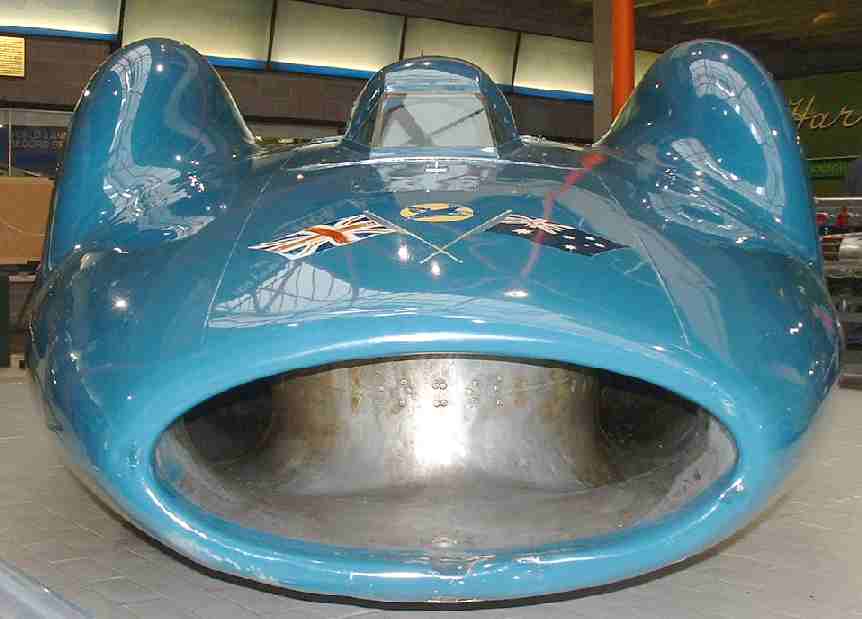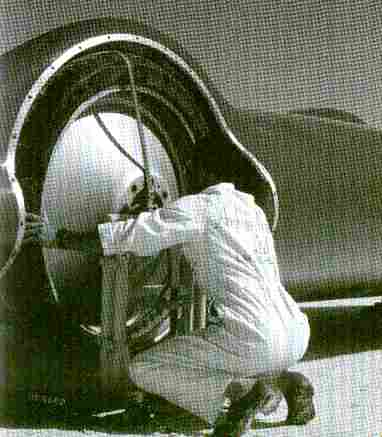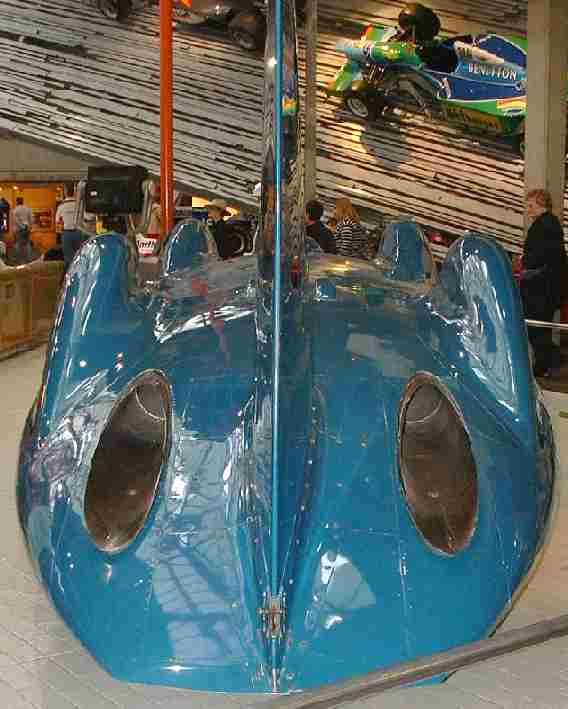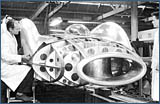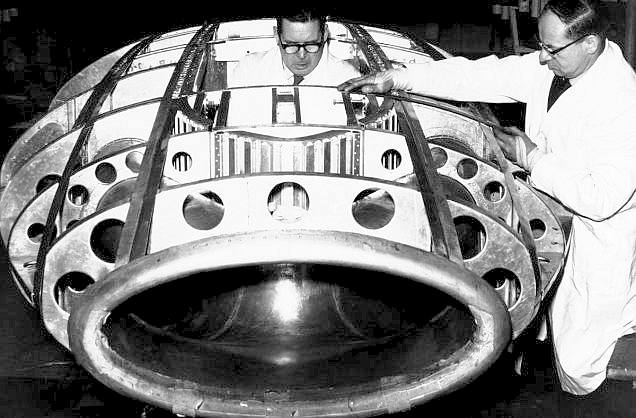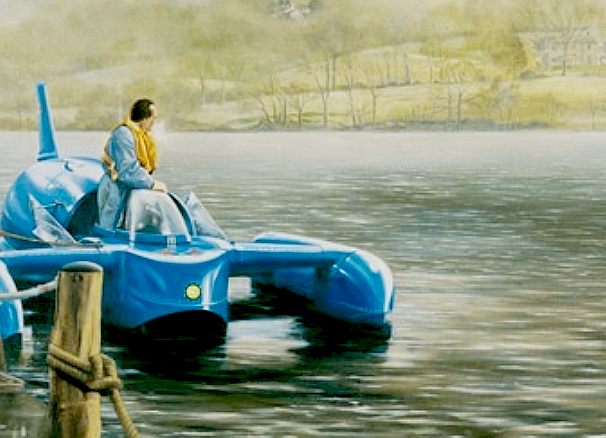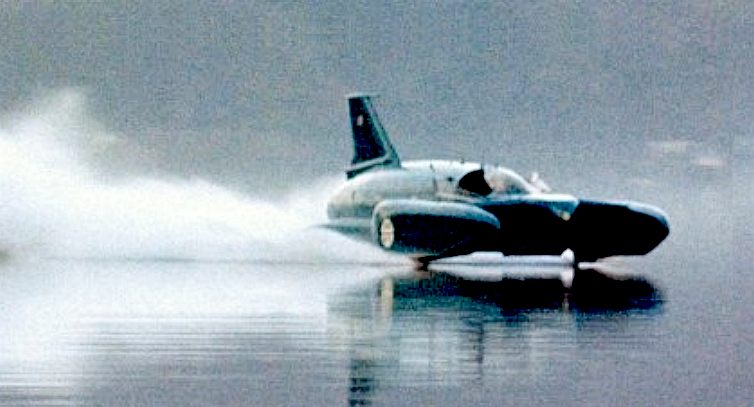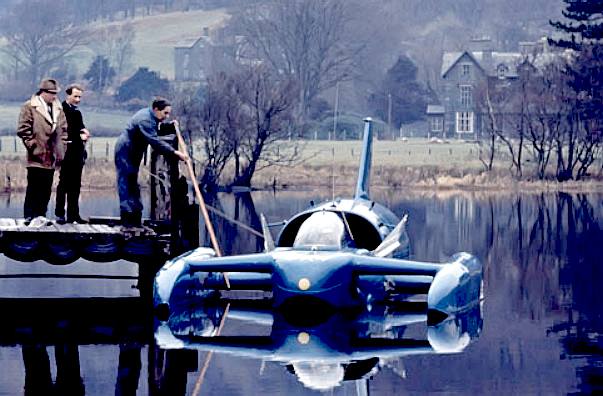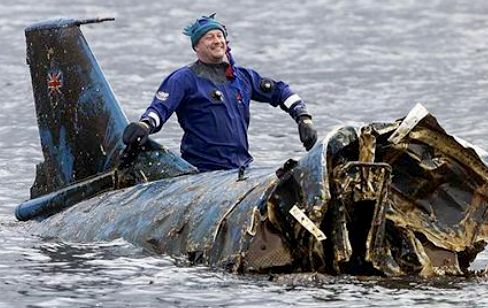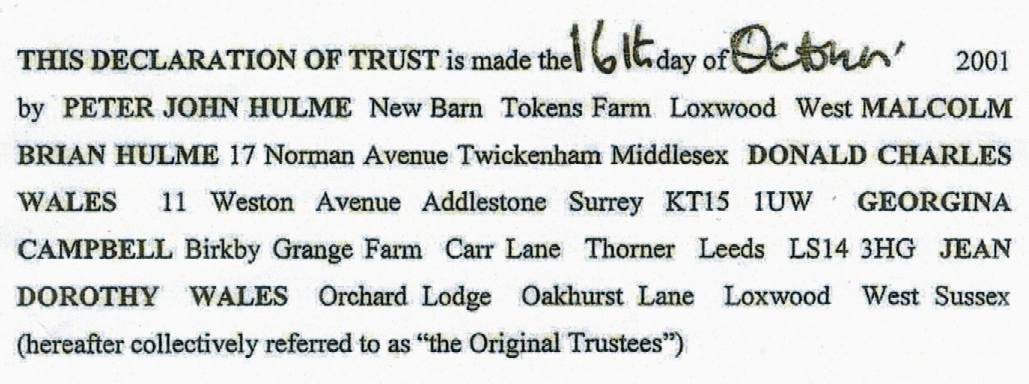|
DONALD CAMPBELL'S JET POWERED BLUEBIRD CN7 CAR & K7 BOAT
|
|
|
Campbell-Norris-Proteus Bluebird CN7 1960
The design concept was certainly simple. Take a jet engine - run drive shafts out of each end to the front and rear axles and build a steel frame to house the engine driver and wheels. Well, that's how it started. But hundreds of drawings later and £1,000,000 spent, the vehicle sported an aluminium honeycomb chassis, with huge wheels all covered in a voluptuous ally body.
CN7 looking into the air intake
In fact, the shape (aerodynamics) of the cn7 was very similar to John Cobb's Mobil Railton Special which almost achieved 400 mph using petrol engines and no tail fin - dare we say John Cobb's car inspired Donald Campbell and Ken and Louis Norris, the designers of the cn7 = campbell/norris 7.
Getting things in proportion - cn7's wheels
Not long after topping John Cobbs 390mph + record, the Summers brothers raised the record above that of the cn7 using 4 petrol engines, comparatively smaller wheels and budget, in Goldenrod. But no-one can deny the spectacle of the cn7, perhaps only eclipsed by Richard Noble's Thrust SSC charging across the desert sands.
5 miles to go chaps - pushing the jet Bluebird to base
Powered by a Bristol Siddeley Proteus free turbine engine developing in excess of 5,000-hp, this revolutionary car was designed by the Norris Brothers and built by Motor Panels, Ltd, of Coventry. It utilised four-wheel drive and two gearboxes, with the gearboxes having a fixed ratio, as there was enough power from the engine, in the lower speed ranges, to dispense with gear changing all together. It utilised three independent braking systems and a mass of complicated electronic instrumentation. First trials were at Bonneville Salt Flats, Utah in September 1960.
This Bluebird was then severely damaged after a huge crash later in the same month. The car was completely rebuilt, thanks to the generosity of Sir Alfred Owen, with the only noticeable changes being a different shaped cockpit cover and the addition of a tail fin for extra stability. The first trials of the rebuilt Bluebird CN7 took place at Lake Eyre in Australia in May 1963, with the world land speed record being set at 403.10 mph at Lake Eyre on 17th July, 1964 after months of torrential rain and flooding.
Bluebird CN7 exhausts
Country of Manufacture: Great Britain
Transmission:
Aeroweb sandwich 2 skins 0.048in thick light alloy spaced 3/4in apart by resin bonded 1/4in mesh honeycomb of 0.002in thick light alloy
Suspension: independent by ball-jointed transverse wishbones
An event was held at the National Motor Museum, Beaulieu, to commemorate the 50th anniversary of DC's double. Tonia Bern-Campbell was a guest speaker, talking about her beloved speed king.
BLUEBIRD K7 JET POWERED HYDROPLANE
Bluebird K7 is a turbo jet engined hydroplane with which Britain's Donald Campbell set seven world water speed records (WSR) during the later half of the 1950s and the 1960s. K7 was the first successful jet powered hydroplane, and was considered revolutionary when launched in January 1955. Campbell and K7 were responsible for adding almost 100 miles per hour (160 km/h) to the WSR, taking it from existing mark of 178 miles per hour (286 km/h) to just over 276 miles per hour (444 km/h). Donald Campbell was killed in an accident with a much modified K7, on 4 January 1967, whilst making a bid for his eighth WSR, with his aim to raise the record to over 300 miles per hour (480 km/h) on Coniston Water.
K7 1966 - 67 TECHNICAL SPECIFICATION Width inc. sponsons (ft & in. / m) 10 ft 6 / 3.20 Width of main hull (ft & in. / m) 5 ft 2 / 1.58 Height inc. tail fin & rudder (ft & in. / m) 8 ft 0.4’’ / 2.45 Sponson length (ft & in. / m) 12 ft 9.5 / 3.90 All-up Weight: (lb / kg) 5,813 / 2,637
Campbell had made his mind up to give it his all no matter what
DONALD
CAMPBELL'S FINAL RECORD RUN
The final run of a man on the edge, Bluebird K7 at full throttle on Lake Coniston in 1967, seconds before the leap into legend.
Engine flame-out then occurred and, shorn of thrust which provided a nose-down moment, K7 experienced a gliding episode in strong ground effect with increasing angle-of-attack (AoA), before completely leaving the water at her static stability pitch-up limit of 5.2°. Bluebird then executed an almost complete somersault (~ 320° and slightly off-axis) before plunging into the water (port sponson marginally in advance of the starboard), approximately 230 metres from the end of the measured kilometre. The boat then cartwheeled across the water before coming to rest. The impact broke K7 forward of the air intakes (where Donald was sitting) and the main hull sank shortly afterwards. Campbell had been killed instantly. Mr Whoppit, Campbell's teddy bear mascot, was found among the floating debris and the pilot's helmet was recovered. Royal Navy divers made efforts to find and recover the body but, although the wreck of K7 was found, they called off the search, after two weeks, without locating his body.
Like a mirror. The surface of Lake Coniston on a day more suited to a flat out run.
Ken Norris had worked out some calculations to guide the dive team to its likely resting point. The first three dives that afternoon found small pieces of wreckage, indicating the dive team were on the correct track. On the fourth dive, the main hull of K7 was found in 142 feet of water, resting in her correct attitude but facing to the south east. A subsequent and prolonged search located many pieces of wreckage, and indeed items were brought to the surface including Bluebird's broken steering wheel and column.
The body of Donald Campbell was not located, and the search was called off on 16 January. The Campbell family and team let it be known that they did not wish to have the hull of K7 recovered in the absence of finding Campbell's body. They also felt they would learn nothing from its recovery. The wreck sat on the lake bed for a further 34 years, its location known by a few people but never disclosed.
A jubilant Bill Smith rides the recovered K7 to shore - March 2001
Gina Campbell is quoted as saying: "I've decided to secure the future of Bluebird for the people of Coniston, the Ruskin Museum and the people of the world". Museum Director Vicky Slowe spoke of Gina's generosity and then said: "Bill Smith has assured us he can get Bluebird fully conserved and reconfigured at no cost to the museum.
As of 2008, K7 is being fully restored by
The Bluebird Project, to a very high standard of working condition in North Shields, Tyne and Wear, using a significant proportion of her original fabric, but with a new BS Orpheus engine of the same type albeit incorporating many original components."
REPRODUCTION K7s
Due to its iconic design, the K7 is one of the most reproduced boats in the world, largely due to Ken Norris's keen eye for beauty. This is true of scale and full size models. The K777 is a superb example of a working K7 inspired boat, while over in Barmera, Australia, there are plans to construct a replica to commemorate DC's visits to Lake Bonney, Lake Dumbleyung and Lake Erye. This is important geographical history that is often overlooked when looking at where the K7 and CN7 achieved the records in the same year. It was in Australia, not the UK.
Filching Manor also has a K7 replica from the BBC docudrama Across the Lake, starring Anthony Hopkins as the driven Donald Campbell.
SIR MALCOLM CAMPBELL'S BLUE BIRDS
DONALD CAMPBELL'S BLUEBIRDS
A book by the designer of a joystick car and several electric racing cars, also a keen Land Speed Record archivist. Building cars is a lot of fun, provided that you are paid for your work. He says that he was not paid because of competing interests by another party who indulged in a war of attrition to prevent his honest competition. Nelson Kruschandl is also a progressive futurist and patentee, with a good sense of humor.
THE MALCOLM CAMPBELL HERITAGE TRUST (MCHT)
You can see from the scans of what appears to be a 'Declaration of Trust' dated the 16th of October 2001, that the original Trustees of the MCHT were:
1. Peter John Hulme, New Barn, Tokens Farm, Loxwood, West Sussex. 2. Malcolm Brian Hulme, 17 Norman Avenue, Twickenham, Middlesex. 3. Donald Charles Wales, 11 Weston Avenue, Addlestone, Surrey, KT15 1UW. 4. Georgina Campbell, Birkby Grange Farm, Carr Lane, Thorner, Leeds, LS14 3HG. 5. Jean Dorothy Wales, Orchard Lodge, Oakhurst Lane, Loxwood, West Sussex.
For more information of this Trust, click on the document extract above.
|
|
|
The
content of this website is copyright © and design copyright 1991 and
2014 Electrick Publications. All rights reserved. The bird
|
|
|
EDUCATION | ELECTRIC CARS | E. CYCLES | SOLAR CARS | SOLAR CAR TEAMS |
